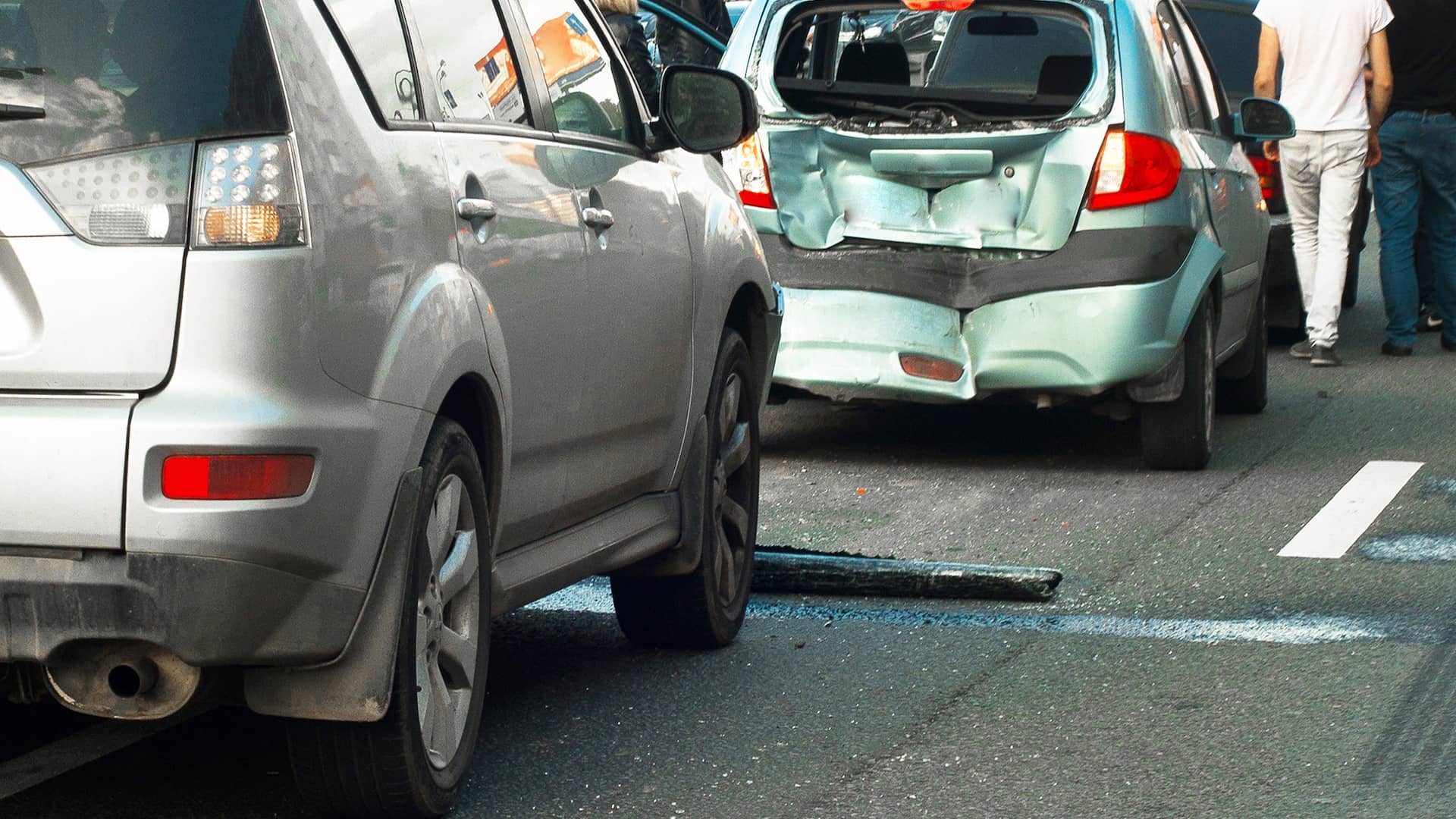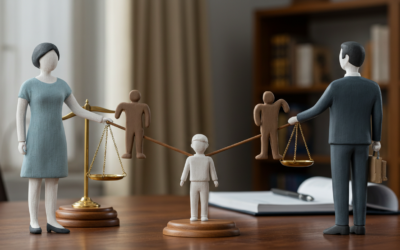If you’ve been injured in a car accident, you naturally have lots of thoughts and concerns swirling around in your mind. While providing fault might not initially be one of them, this is an important aspect to consider.
In a personal injury case, it’s important to understand the factors and actions that worked together to cause the accident. If you can prove that you were not behind it, this evidence can help you recoup damages to cover the financial and physical burdens you’re experiencing.
Proving the fault of another party isn’t always easy or straightforward, but it’s a critical step to receiving the compensation you require to heal and reclaim your quality of life. Today, we’re sharing how to prove fault in a car accident, and how our team of qualified personal injury attorneys can help.
Understanding Wisconsin’s Legal System
Each state has its own fault law that dictates how insurance companies will handle the aftermath of a car accident. These can be divided into two categories:
- No-fault states
- At-fault states
In a no-fault state, drivers must carry personal injury protection (PIP) coverage as well as liability coverage on their auto insurance. If they are involved in an accident, their PIP insurance will cover their own medical bills. However, the at-fault driver will still be responsible for covering any type of property damage they may have caused.
Conversely, an at-fault state operates under a tort liability system. In this case, the insurance company of the driver who caused the accident will be responsible for covering the damages. Their bodily injury liability coverage will pay for the other driver’s hospital bills, while their property damage liability coverage will cover the costs required to repair the other party’s vehicle or property.
Currently, 12 states and Puerto Rico follow no-fault insurance laws. The remaining 38 states, as well as Washington, D.C., are considered at-fault states.
Wisconsin is an at-fault state, operating under the tort system. This means that after a car crash, an accident victim is required to establish that someone else caused the accident or was legally at fault for the crash. They must complete this step before they can recover any damages.
Once a person is found to be at fault for an accident, they will be required to pay for all of the damages incurred. Each accident is unique and will include its own types of damages, but the most common ones include:
- Medical costs
- Lost wages
- Physical pain and suffering
- Vehicle repairs or replacements
- Emotional distress
- Other out-of-pocket expenses
Note that these damages can occur in the past, present, and future. The damages rewarded must be substantial enough to account for future suffering and financial distress, especially if the issues are ongoing.
Proving Fault in a Wisconsin Car Accident
We’ve established that it’s important to prove fault in a Wisconsin car accident. However, this step can be easier said than done. This is especially the case if you were injured and your memories surrounding the crash are fuzzy or even non-existent.
A car accident attorney can help you work through the events that occurred. They can also examine other evidence and documentation about your case, including the police report and witness statements, to understand the details of the accident. Together, you can prove fault via several different means. Let’s take a look at some of the most common routes.
Proving Common Traffic Violations
Some car accidents occur because a negligent party clearly violated traffic laws. Examples may include:
- Driving faster than the posted speed limit (speeding)
- Running a red light
- Running a stop sign
- Failing to yield if others have the right of way
These situations are often the easiest to prove blame, especially if witnesses saw the violation occur. The same applies to drivers who are intoxicated. An intoxication report taken at the time of the collision can definitively state whether the at-fault driver was intoxicated at the time of the crash.
If you or your lawyer believe that the accident occurred as a result of a traffic law violation, it’s important to understand the specific rules surrounding your case. You can reference the Wisconsin DMV to learn more about your local and state laws.
These laws can be complex and intricate, especially if you’ve never had to deal with them in the past. Legal jargon and terminology can be dense and hard to navigate, and it might be unclear how it applies to your case.
This is why it’s important to hire a personal injury lawyer. This legal expert has experience working with agencies like the DMV and understands every aspect of the law. Not only can they help you find the specific traffic violation that relates to your accident, but they can often use it to prove that the other party was at fault.
Proving Illegal Turns
Making an illegal left or right turn could also cause a collision. Most of the time, when a driver turns illegally and crashes into the car in front of them, they are at fault.
These types of accidents can be severe in nature, often leading to significant physical injuries or even death. They can also cause extensive damage to a driver’s vehicle.
With an illegal turn, victims often have very little time to respond to the other driver’s actions, which makes a crash more likely.
Typically, an illegal left turn occurs when a driver enters an intersection. They turn left thinking they have time to complete the action, but the light turns red before they can safely and legally do so. If they crash into another driver, the victim will usually have damage on the front, right side of their vehicle. Conversely, the driver’s vehicle will be impacted on the very front.
It’s important to note that drivers making left turns are not at fault 100% of the time. The driver going straight across might have run a red light or a stop sign, entering the intersection illegally. Or, they might have neglected to yield to a driver who had the right of way.
Proving Rear-End Collisions
You can also use property damage to prove fault in rear-end collisions, which occur when one driver crashes into another driver positioned directly in front of them.
Rear-end collisions often happen because the back driver is distracted and unprepared to brake in time after the driver in front of them applies their brakes. Or, they might be following too closely, which also leaves them with little time to respond. In either case, the front driver will have damage on the back of their vehicle, while the driver in the back will have damage on the front.
While the driver in the rear is usually at fault, front drivers can be found responsible for these types of collisions. For instance, if their taillights were out and they failed to replace or repair them, then the rear drive would not know their intent to slow or stop.
An attorney will work with the police, as well as expert witnesses, to understand the chain of events that led to the collision. The location of property damage can be beneficial, especially in the case of illegal turns and rear-end crashes.
Proving Fault Through Negligence
Sometimes, another driver does not clearly violate any type of traffic law. Rather, the crash occurs because they acted negligently.
In general, states can follow one of two types of negligence systems when determining fault. These include:
- Comparative negligence
- Contributory negligence
Comparative Negligence
In states that follow a comparative negligence system, drivers can still receive compensation for their personal injuries or property damages if they were partially at fault for the accident. The state will determine the extent to which each party is at fault using percentages.
Then, they may raise or lower the amount of compensation that each party receives depending on the level of responsibility they assume for the crash. This system can be further separated into four different categories:
- Pure comparative negligence
- 50% rule of modified comparative negligence
- 51% rule of modified comparative negligence
With a pure comparative negligence system, each party assumes a percentage of fault to determine how insurance companies will award compensation. Regardless of how those percentages may differ, victims may be able to receive compensation as long as they weren’t 100% responsible for causing the accident. To date, 13 states use this model to determine fault via negligence.
Under the 50% rule of comparative negligence, a plaintiff may not recover damages if they are found to be 50% or more at fault.
Twelve states adhere to the 50% rule, and 21 states (including Wisconsin) adhere to the 51% rule of modified comparative negligence. Under this rule, a plaintiff may not recover damages if the state assigns them 51% or more of the fault.
Contributory Negligence
Pure contributory negligence is much less common than comparative negligence. Formerly known as the 1% rule, it’s only upheld in four states including Alabama, Maryland, North Carolina, and Virginia, as well as Washington, D.C.
Under this rule, injury victims can only recover compensation if they are entirely fault-free in an accident that involves two or more parties.
Why a Police Report Matters
When law enforcement arrives at the scene of a car accident, they will complete a police report containing details of the crash. In it, they’ll record the version of events as told by both drivers, if they are able. They will also include their professional opinion and take on what occurred.
If there were any witnesses who saw the accident occur, the police may also record their testimonies, as well as their contact information.
In addition, the report will also include follow-up actions, such as whether the arresting officer issued a citation to the driver allegedly at fault. Your attorney can reference this information and use it to help support your claim.
You should always double-check the report to make sure the facts are accurate. This includes looking for common errors around the location and time of the accident. While these basic mistakes are relatively easy to correct, it can be more challenging to correct a report that misidentifies which driver was at fault.
Other documentation that can help support your claim and prove fault include:
- Mechanic reports detailing property damage
- Medical reports detailing physical injuries
- Photos and videos of the accident scene
Hire an Attorney for Your Car Accident Claim
Immediately following a car accident, you should be able to focus on healing and reclaiming your quality of life. You shouldn’t have to sort through various documents and accounts to determine who was at fault in the collision.
Your personal injury lawyer can take care of this step for you. They will work diligently to gather, organize, and analyze all of the facts related to your case. Then, they will explore all avenues to more closely understand who is at fault and liable for damages.
If you’ve been injured in a Wisconsin car accident, don’t wait. Contact our team of qualified, experienced lawyers to make sure you receive the full compensation you deserve. We’ll help prove fault and fight on your behalf so you can get back behind the wheel with confidence. Schedule a free consultation today to learn more and get started.




